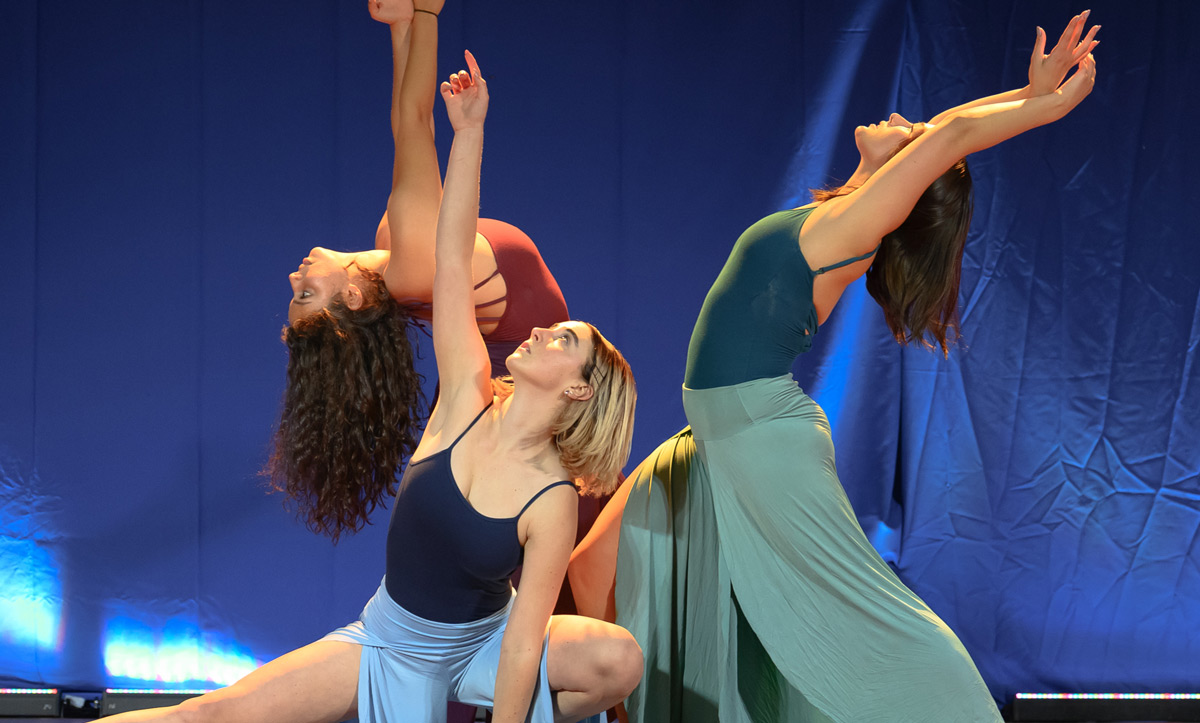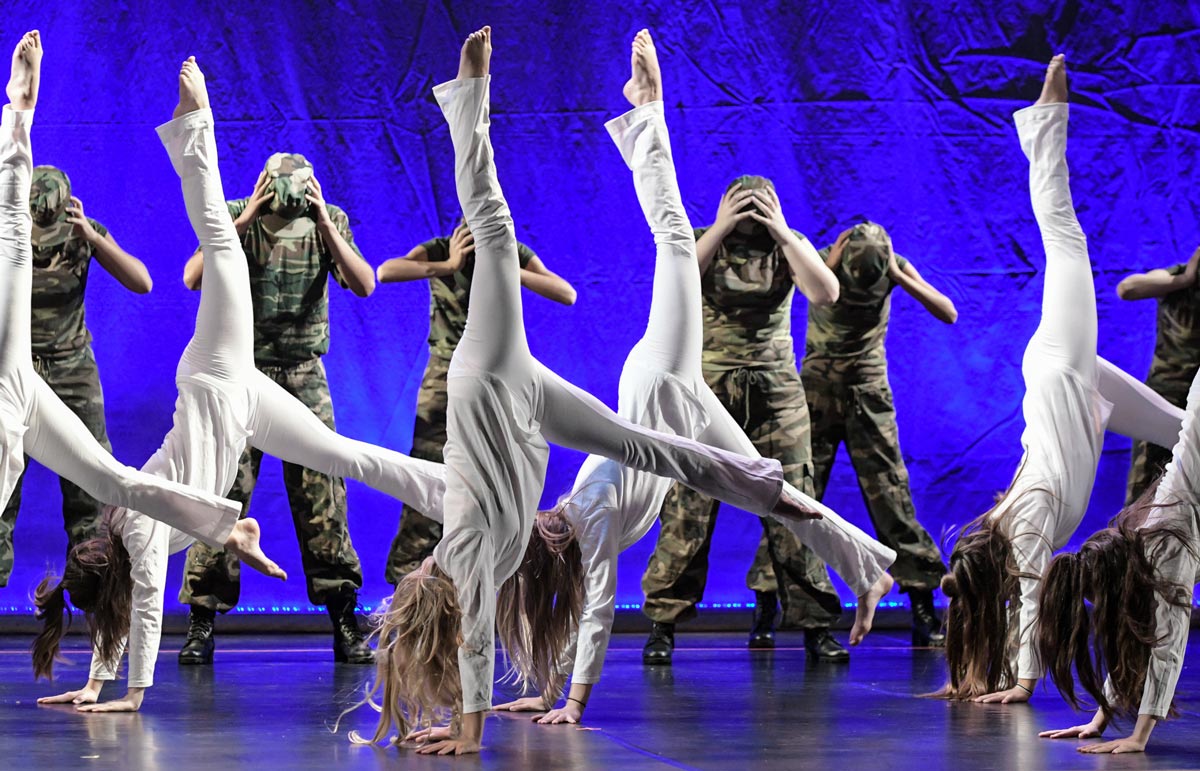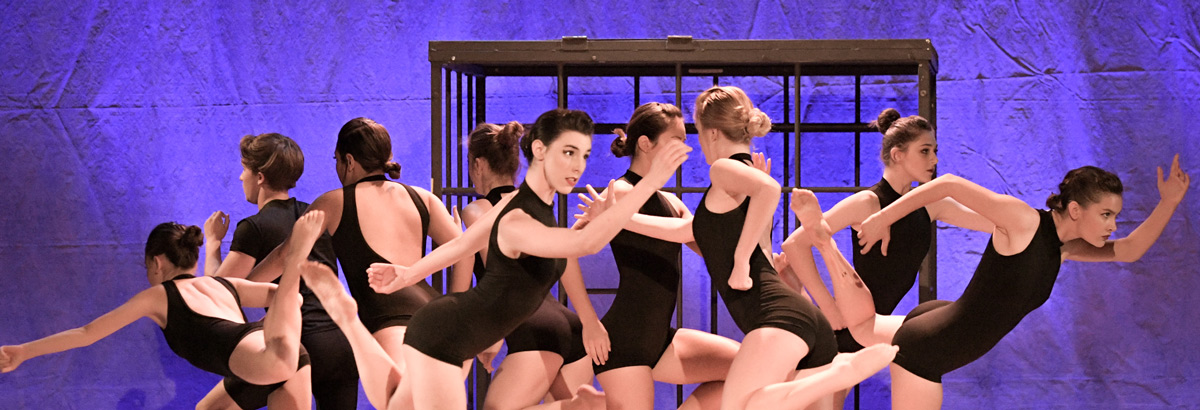class act Best practices in action
Best practices in action

Best practices in action

Nordhoff High School Dance
arely does one consider dance as an option when thinking of career technical education pathways, yet at Ojai Unified School District’s Nordhoff High School, students who graduate from the Golden Bell Award-winning Nordhoff Dance program leave equipped with a strong work ethic, creativity, critical thinking, collaboration and communication skills.
“There are plenty of students who may not go into a career in the arts despite studying within the Arts, Media and Entertainment industry sector. However, students who study the arts within the scope of a CTE program will be the kind of humans, ideally, that people want to hire,” said Kim Hoj, the school’s dance and choreography teacher.
Surveys of alumni show that while many pursue creative paths such as concert or commercial dance, choreography, becoming K-12 or studio dance teachers, acting or directing, others have gone on to work as educators, school counselors, physical therapists, personal trainers and more.
It’s those soft skills honed over the course of four levels that will benefit students long after they’ve graduated high school. For instance, collaboration, she said, “sometimes comes out of really hard moments because everyone doesn’t always agree — choreographing with a partner can be especially challenging. There’s definitely an emphasis on how to work together and be someone that other people can rely on. When your ensemble’s relying on you, you’ve got to be there, performance ready.”
Students explore a variety of dance genres including jazz dance, tap dance, hip-hop, ballet and contemporary dance with an emphasis on dance styles from around the world, including Bollywood, Salsa, Bachata and West African dance. Guest choreographers — including alumni — link what students are learning in the classroom to the professional world of dance.


Originally created in the 2004–05 school year as an introductory course to meet the Visual and Performing Arts prerequisite for entry to the University of California and for a physical education credit, the program evolved in 2016 into a robust Career Technical Education Arts, Media and Entertainment pathway with the addition of the Dance III: Choreography Honors course in addition to opening equitable access to the Dance I course for all students who wish to enroll. About 75 students participate each year in a school of approximately 700 pupils.
Dance I focuses on developing introductory skills in dance technique, providing students an opportunity to perform two to four times per year. Dance II emphasizes increasing competency in dance technique, performance and choreography while gaining academic comprehension of the historical, social-emotional and personal context of the discipline. Students must create their own dance phrases with instruction in choreography, partnering, dance forms and improvisation, and instruct other dancers in their original choreography. Dance III and IV involve an intensive and hands-on exploration of the choreographic process through investigation and analysis of movement studies, student-led inquiries and assessments of movement studies, internship, mentorship and more.

“Over the 18 years of the dance program, there has been this beautiful tradition of nurturing and developing student skills from older students to younger students,” Hoj said. “These include not just performative skills but teaching, leadership and group facilitation skills.”
There is also a strong social-emotional component stemming from Hoj’s background as a school counselor earlier in her career — an aspect more important than ever as students continue grappling with mental health challenges caused or exacerbated by the pandemic.
“My graduate degree in clinical mental health counseling dance therapy informs my practice as a teacher,” she said. “For example, let’s take flexion. Flexion is so much about pulling in and becoming physically smaller. And one could ask, ‘Are there certain emotions that might be connected with that sense of needing to protect one’s vital organs, for example?’ Like when a person is feeling bad, maybe they want to hang out in the fetal position. So, part of what we do is to give students the opportunity to develop a sense of themselves: ‘When you are moving in this way, what comes up for you emotionally? How do you feel when you’re leaping?’ Understanding oneself somatically from the inside out comes from exploration of these concepts.”
While the pandemic upended core characteristics of the dance program — especially the mentorship and camaraderie aspects — the silver lining is that many policymakers are beginning to understand the importance of education beyond what can be assessed in an exam, Hoj said.
“Because of the pandemic people are now starting to see that arts education is a doorway to social-emotional learning and to self-understanding,” she said. “I think that that is what’s missing in our expectations of K-12 education, and so that’s where arts education is a catalyst for developing the whole child who will eventually grow into the emotionally mature and responsible adults hired within industry.”
— Alisha Kirby